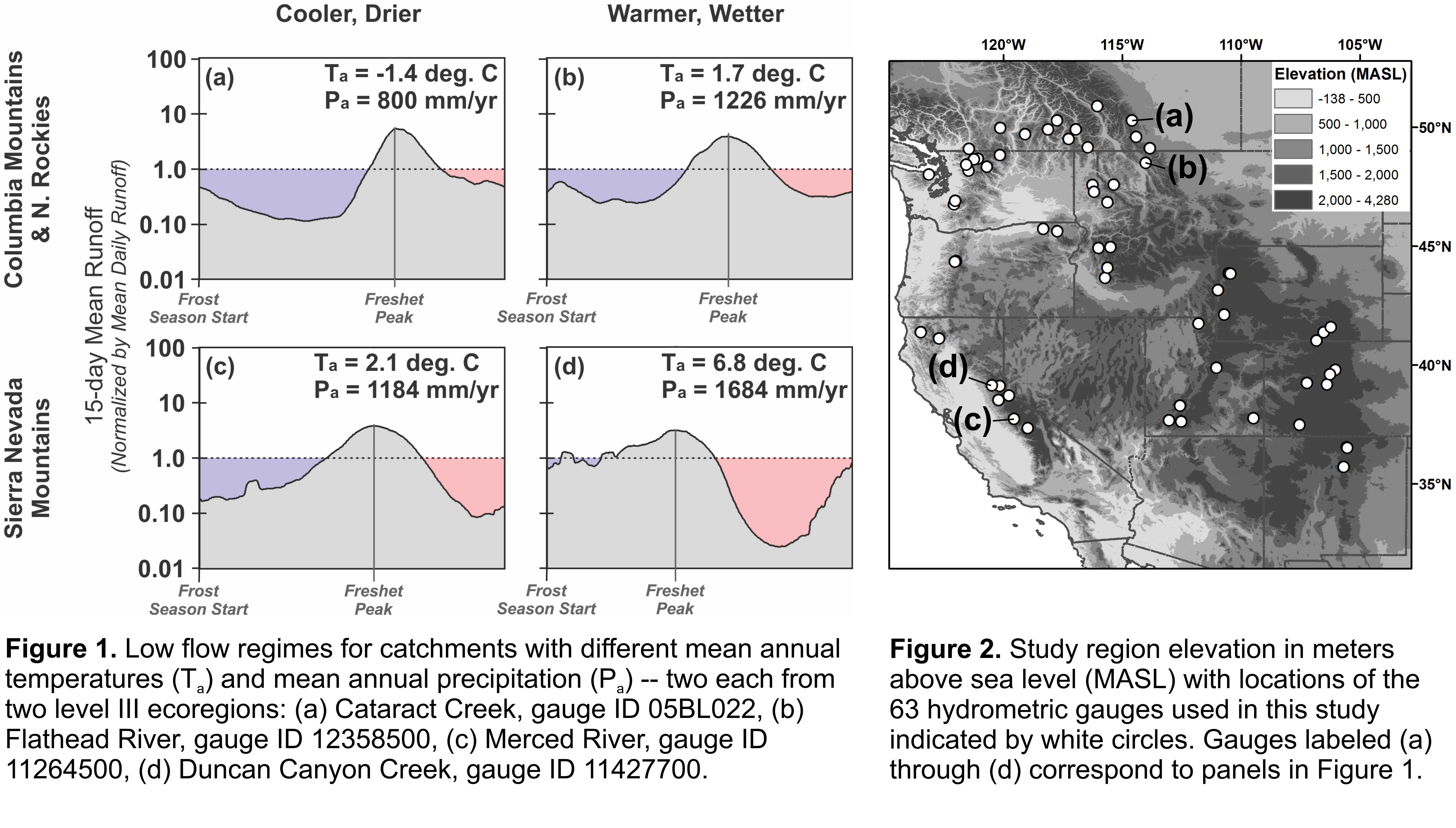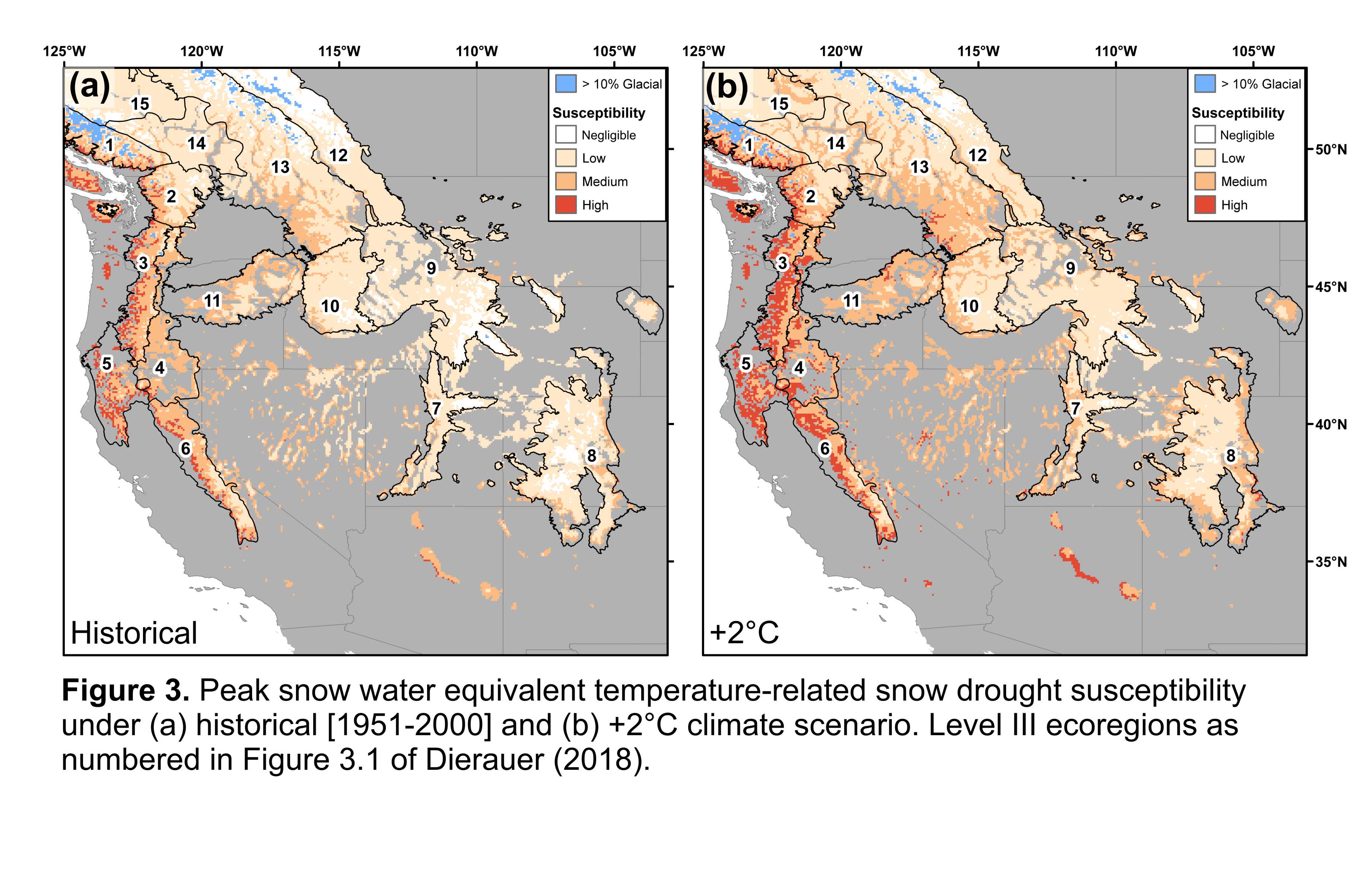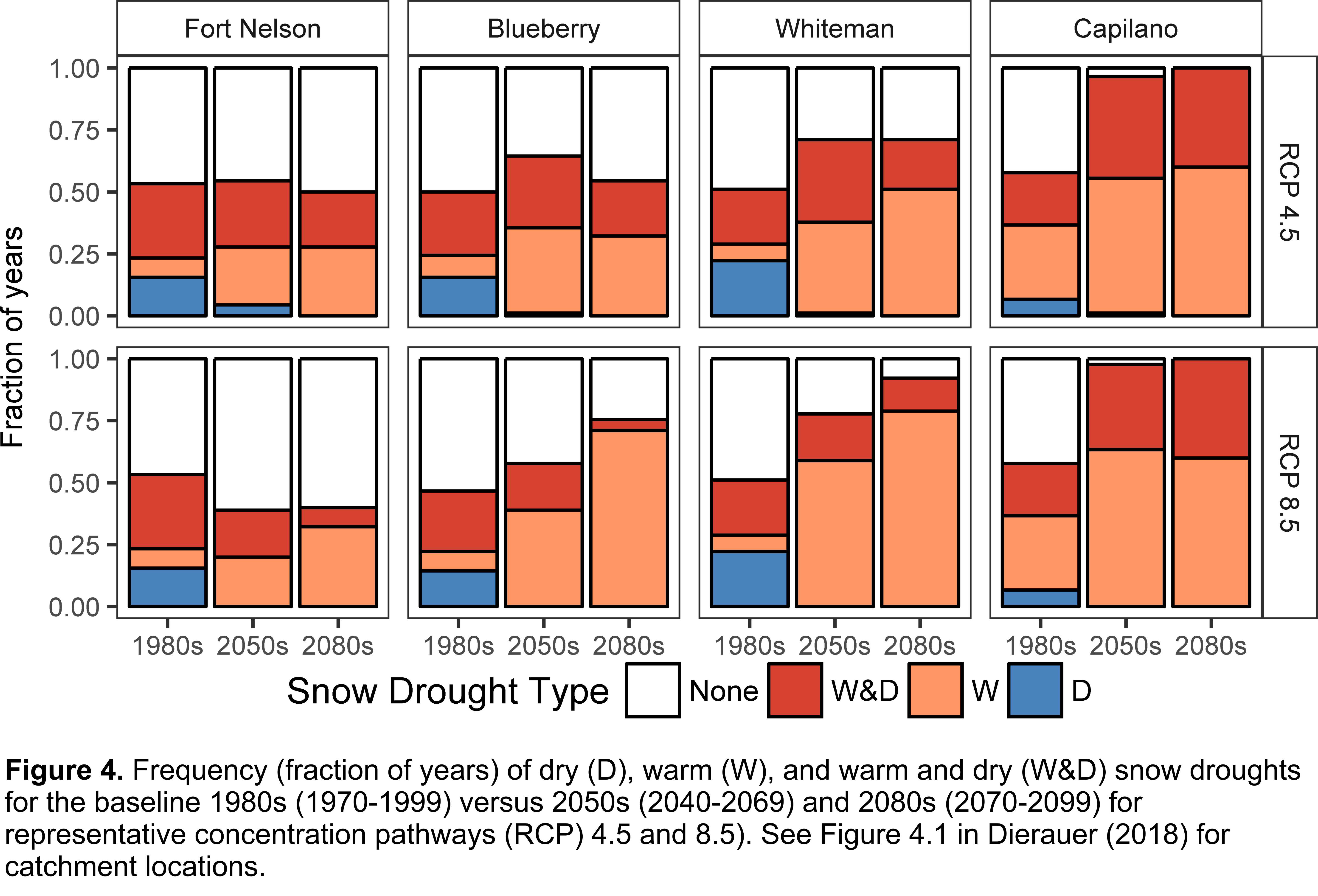| In western North America, snowpack supplies much of the water used for irrigation and for municipal and industrial uses, and snowmelt recharges groundwater and provides ecosystem-sustaining baseflow during low flow periods. Continued climate warming is expected to have large impacts on snowmelt hydrology, with subsequent impacts on low flows and snow and streamflow drought regimes. This research combined two separate methodologies, a data-driven (downward) approach and a process-based (upward) approach, to improve our understanding of snow drought and streamflow drought in the context of a warming climate. The data-driven approach combined observed hydroclimatic time series with multiple statistical methods, including bivariate and partial correlation and temporal and spatial analogs. The process-based approach combined climate change projections and hydrological modelling. The short description of three of the studies that are part of this research project are provided below. Additional information can be found in: Dierauer, J.R. (2018). Snow drought and streamflow drought in western North America in the context of a warming climate. (Doctoral dissertation). Simon Fraser University, Burnaby, British Columbia, Canada. |
|
 |
|
Study 1, data-driven: Climate controls on runoff and low flows in mountain catchments of western North America |
|
The first data-driven study developed a robust methodology for classifying low-flow regimes and separating summer versus winter low flows based on the long-term climate and hydrology of seasonally snow-covered catchments (Figure 1). Results show that, based on hydrometric records from 63 near-natural catchments (Figure 2), precipitation is the dominant control on the inter-annual variability of annual runoff and on the duration and severity of summer and winter low flows. The temperature-sensitivity of low flows, however, is up to two times higher than the temperature-sensitivity of annual runoff. Annual runoff and low flows are most sensitive to winter climate conditions, particularly winter precipitation and winter thawing degrees. The results provide another line of evidence regarding the impacts of continued global warming on snowmelt hydrology.
This study has been published as: |
|
Study 2, data-driven: Winter temperature controls on snow drought risk in western North America |
|
 |
|
| In the second data-driven study, the historical (1951-2013) frequency, severity, and risk of dry, warm, and warm and dry snow droughts were quantified at the grid-cell and ecoregion scale for the major mountainous regions of western North America (WNA). Results highlight spatial differences in snow drought regimes across WNA and reveal that critical temperature-thresholds exist at -3.1°C and 1.4°C, above which the warm snow drought risk increases more rapidly. Three percent of the non-glaciated snow storage in WNA has high susceptibility to temperature-related snow drought, representing 11 km3 of water, or approximately one-third the capacity of Lake Mead. Under a +2°C climate scenario, an additional 8% (28 km3) of the WNA snow storage volume will transition to high susceptibility (Figure 3). | |
Study 3, process-based: Climate change impacts on snow and streamflow drought regimes |
|
 |
|
| For the process-based study, climate change impacts on snow drought, low flows, and summer streamflow drought were investigated using generic coupled groundwater-surface water models for four headwater catchments in British Columbia. Results show that increased precipitation and temperature lead to decreased dry snow drought frequency and increased temperature-related (i.e. warm and warm and dry) snow drought frequency (Figure 4). Further, climate warming and the subsequent shifts in the snow drought regime result in decreased summer runoff, decreased summer groundwater storage, and longer, more severe summer low flow periods. Snow droughts have direct impacts on summer low flows, and temperature-related snow droughts not only become more frequent and severe in the future but are also more likely to result in summer streamflow drought conditions. | |